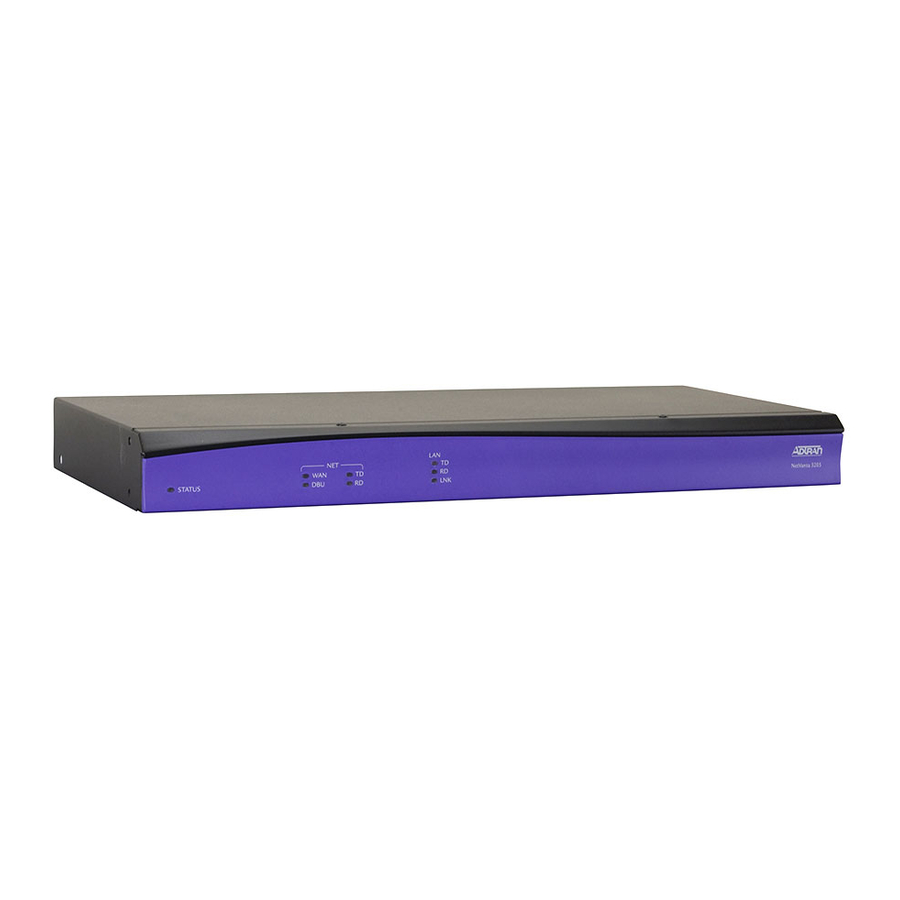
Advertisement
Quick Links
NetVanta
Series
(with Octal T1 Wide Module)
Quick Configuration Guide
Equipment Required
•
A VT100 terminal or a PC with VT100 emulator software for connecting to the unit.
•
DB-9 (male) to DB-9 (female) straight-through serial cable for configuring the unit.
•
Appropriate cable(s) for connecting the system to the existing network.
The configuration sections of this quick configuration guide are formatted to provide
step-by-step text descriptions for selected applications. The configuration parameters
used in the example outlined in this document are for instructional purposes only. Please
replace all bold underlined entries (example) with your specific parameters to configure
your application.
Network Diagram
Multilink PPP Internet Access
61200890L1-42B
Technical Support 1-888-4ADTRAN (1-888-423-8726)
November 2004
Advertisement

Summary of Contents for ADTRAN NetVanta Series
- Page 1 NetVanta Series (with Octal T1 Wide Module) Quick Configuration Guide Equipment Required • A VT100 terminal or a PC with VT100 emulator software for connecting to the unit. • DB-9 (male) to DB-9 (female) straight-through serial cable for configuring the unit. •...
- Page 2 NetVanta. You must change the IP address of your PC before you can proceed. ADTRAN recommends that you set the Ethernet speed and duplex to match the switch or hub it is plugged in to. For example:...
- Page 3 The NetVanta Network Interface Modules (NIMs) use a slot/port notation for interface identification. All non-modular interfaces built into the base unit (e.g., the Ethernet port) are identified using 0 as the slot number. Configure a Telnet Session The following steps show how to access the Telnet configuration parameters and change the password.
- Page 4 Create the Interface and Define the Encapsulation 1. Enter interface fr 1 to create a Frame Relay virtual interface labeled 1. 2. Enter frame-relay lmi-type none (contact your service provider for your correct LMI-type) to configure signaling on the Frame Relay virtual interface 1. The default LMI type is ANSI (Annex D).
- Page 5 Create a T1 to a Virtual Interface Cross-Connect For this example we will configure a T1 WAN interface with DS0s 1 through 10 for data. The following steps assume the Global Configuration mode is currently active. Verify that the prompt of your unit displays (config)#. 1.
-
Page 6: Save The Configuration
Create an Octal T1 Multilink Cross-Connect For this example we will configure T1 WAN interfaces with DS0s 1 through 24 for data. The following steps assume the Global Configuration mode is currently active. Verify that the prompt of your unit displays (config)#. 1.








